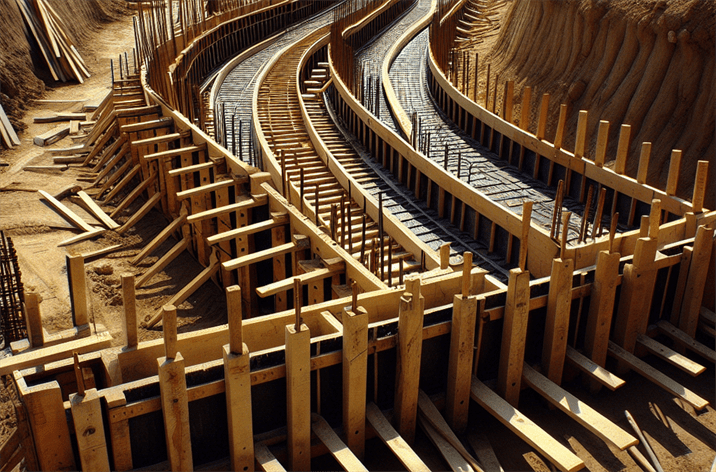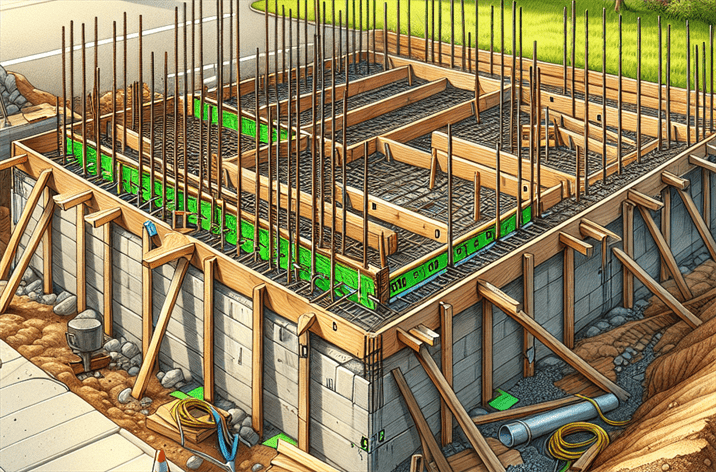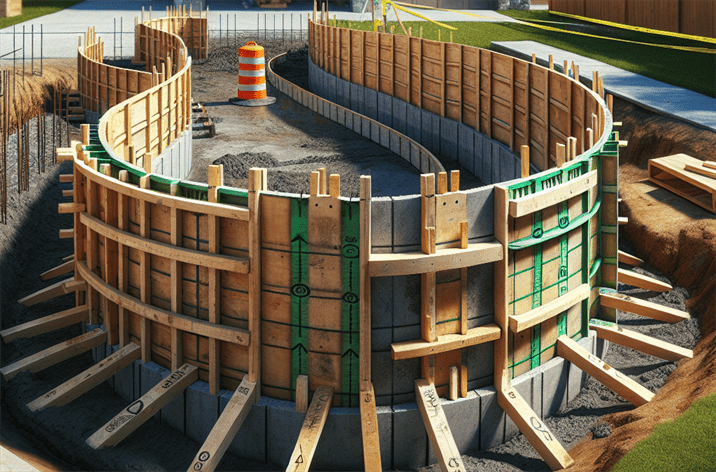Civil Engineering Stakes: Precision Tools for Modern Projects
Introduction
In the world of civil engineering, precision is paramount. Did you know that approximately 30% of construction costs can be attributed to errors in layout and measurement? This staggering statistic underlines the critical role that civil engineering stakes play in the construction process. These tools are not merely wooden markers; they are essential instruments that ensure accuracy and efficiency, setting the foundation for successful projects.
As the construction landscape evolves, the demand for precision tools has surged. Recent innovations in civil engineering emphasize the necessity of using advanced materials and techniques to enhance project outcomes. The integration of technology, such as GPS and digital surveying, has transformed how engineers and contractors approach site layouts, making the accurate placement of stakes more crucial than ever.
This article aims to provide a comprehensive overview of civil engineering stakes, covering their definition, historical context, functioning mechanisms, benefits, challenges, and future trends. Whether you are a seasoned professional or a newcomer to the field, understanding these tools will equip you with the knowledge to optimize your projects.
For insights into the best practices for using stakes in construction, check out our guide on Top Construction Techniques: Stakes & Lath.
What is Civil Engineering Stakes?
Definition
Civil engineering stakes are markers used to indicate specific points or lines on a construction site. They serve as reference points for various activities, including site layout, grading, and boundary delineation. Typically made from durable materials like wood or metal, these stakes are driven into the ground to provide a visual and physical reference for construction workers.
Historical Context
The use of stakes in construction dates back centuries. Historically, wooden stakes were the primary tool for marking boundaries and layouts, as seen in ancient civilizations such as the Egyptians and Romans. Over time, the materials and techniques used for stakes have evolved, with modern innovations incorporating elements like treated wood and advanced marking systems.
Key Milestones in Their Development
- Ancient Civilizations: Early use of wooden stakes for property boundaries and construction layouts.
- Industrial Revolution: Introduction of standardized materials and methods for stake production.
- Digital Age: Integration of technology, such as GPS, to enhance the accuracy of stake placement.
The Importance of Civil Engineering Stakes
In today’s construction landscape, civil engineering stakes are more important than ever. They provide essential reference points that help ensure projects adhere to design specifications, leading to improved efficiency and reduced costs. Additionally, stakes play a vital role in facilitating clear communication among team members, which is crucial for the success of any construction project.
Civil Engineering Stakes in the Context of Construction
The impact of civil engineering stakes on construction projects cannot be overstated. They help in:
- Establishing Boundaries: Clearly defining property lines and project limits.
- Guiding Excavation: Providing reference points for grading and excavation activities.
- Ensuring Accuracy: Helping maintain alignment and elevation during construction.
Key Players or Contributors
Organizations and innovations continue to shape the future of civil engineering stakes. Key players include manufacturers of high-quality stakes and lath, as well as companies specializing in surveying technology. The collaboration between traditional construction methods and modern technology continues to evolve, enhancing the effectiveness of stakes in various projects.
For a comprehensive understanding of how construction layouts benefit from civil engineering stakes, visit our page on step-by-step installation guide.

How Do Civil Engineering Stakes Work?
The Mechanics of Civil Engineering Stakes
Civil engineering stakes function by providing a physical reference that guides construction activities. When placed correctly, they help ensure that structures are aligned, graded, and situated according to the project specifications. The stakes are typically driven into the ground at strategic locations, creating a grid or layout that contractors can follow.
Technological Foundations of Civil Engineering Stakes
Modern civil engineering stakes are supported by a range of technological tools and systems. These include:
- GPS Technology: Allows for precise positioning and alignment.
- Laser Levels: Help ensure that stakes are set at the correct elevations.
- Digital Surveying Tools: Enhance measurement accuracy and facilitate data collection.
These technological advancements significantly improve the efficiency and accuracy of stake placement, minimizing the risk of errors.
Real-World Applications of Civil Engineering Stakes
Civil engineering stakes find application across various construction scenarios, including:
- Residential Projects: Used for marking boundaries and guiding construction layouts.
- Commercial Developments: Essential for ensuring compliance with zoning laws and construction codes.
- Infrastructure Projects: Crucial for large-scale projects like roads, bridges, and utilities.
The versatility of these stakes makes them indispensable in the construction industry.
Benefits and Common Challenges of Civil Engineering Stakes
Benefits of Using Civil Engineering Stakes
The advantages of utilizing civil engineering stakes in construction are numerous:
- Increased Precision: Ensures accurate placement and alignment, reducing the risk of costly errors.
- Improved Communication: Provides clear visual markers that assist team members in understanding project requirements.
- Cost Efficiency: Minimizes the likelihood of rework due to layout mistakes, saving time and resources.
Common Challenges Associated with Their Use
Despite their benefits, there are challenges associated with the use of civil engineering stakes:
- Environmental Factors: Weather conditions can impact the visibility and integrity of stakes.
- Site Conditions: Uneven or rocky terrain may complicate the placement of stakes.
- Human Error: Miscommunication or oversight can lead to incorrect placement, resulting in project delays.
Addressing these challenges requires careful planning and execution.
Steps to Get Started with Civil Engineering Stakes
To effectively utilize civil engineering stakes in your projects, consider the following steps:
- Planning: Assess the site and determine the necessary stake placement based on project requirements.
- Gathering Materials: Choose high-quality stakes that are suitable for your specific application.
- Measuring and Marking: Use measuring tools to ensure accurate placement, taking into consideration environmental conditions.
- Driving Stakes: Follow best practices for driving stakes into the ground, ensuring they are secure and aligned.
- Monitoring and Adjusting: Regularly check the placement of stakes throughout the project to make any necessary adjustments.
By following these steps, you can enhance the effectiveness of civil engineering stakes in your projects.
Future Trends and Innovations in Civil Engineering
The future of civil engineering stakes is set to be influenced by several key trends and innovations:
Smart Stake Technology
The integration of smart technology with stakes is on the rise. This includes Bluetooth-enabled stakes that can communicate with mobile devices, providing real-time data on positioning and alignment.
Eco-Friendly Materials
As sustainability becomes a priority in construction, the demand for eco-friendly stakes is increasing. Innovations in materials that are both sustainable and durable are expected to emerge, offering environmentally responsible solutions.
Enhanced Digital Tools
The continued development of digital surveying and mapping tools will further improve the accuracy and efficiency of stake placement, allowing for more complex and precise project designs.
Conclusion
Civil engineering stakes are essential tools that play a critical role in the success of modern construction projects. Their ability to enhance precision, improve communication, and save costs cannot be overstated. As technology continues to evolve, the role of stakes will become even more integral to the construction process.
By understanding the importance and functionality of civil engineering stakes, professionals in the field can leverage these tools to optimize their workflows and achieve better project outcomes. Embracing innovations and best practices in stake usage will undoubtedly lead to a more efficient and effective construction landscape.
For further insights into maximizing project efficiency with the right tools, explore our guide on Essential Tips for Construction Site Organization.
Resource Links:
1. American Society of Civil Engineers – Professional organization that provides resources, education, and advocacy for civil engineers.
2. Civil Engineering Magazine – A publication featuring articles on trends, innovations, and practices in civil engineering.
3. Engineering.com – An online resource offering news and insights on various engineering disciplines, including civil engineering.














